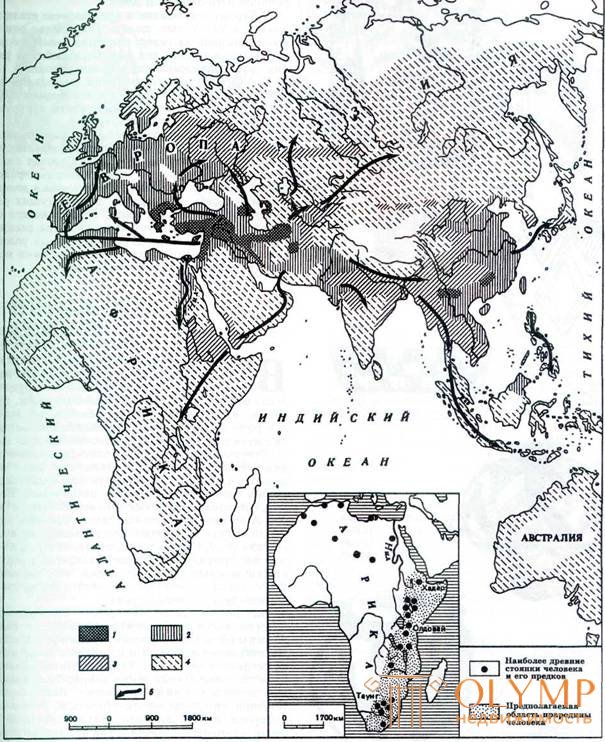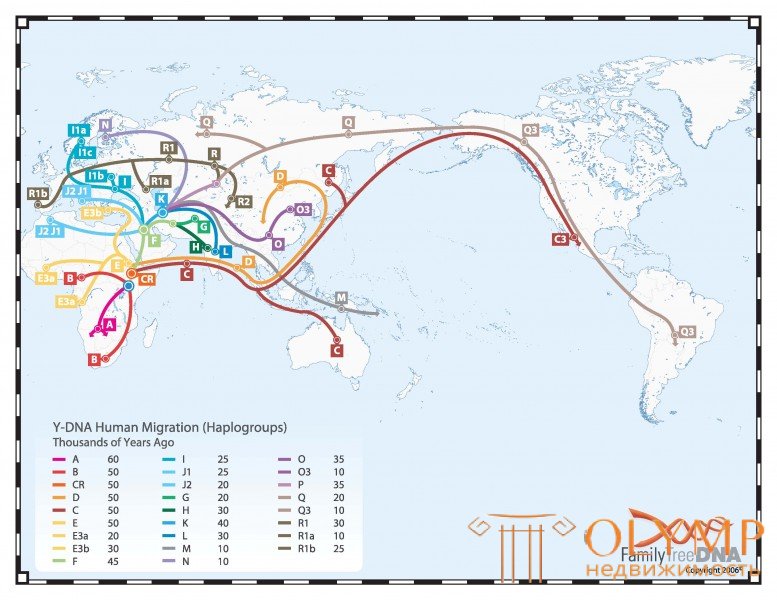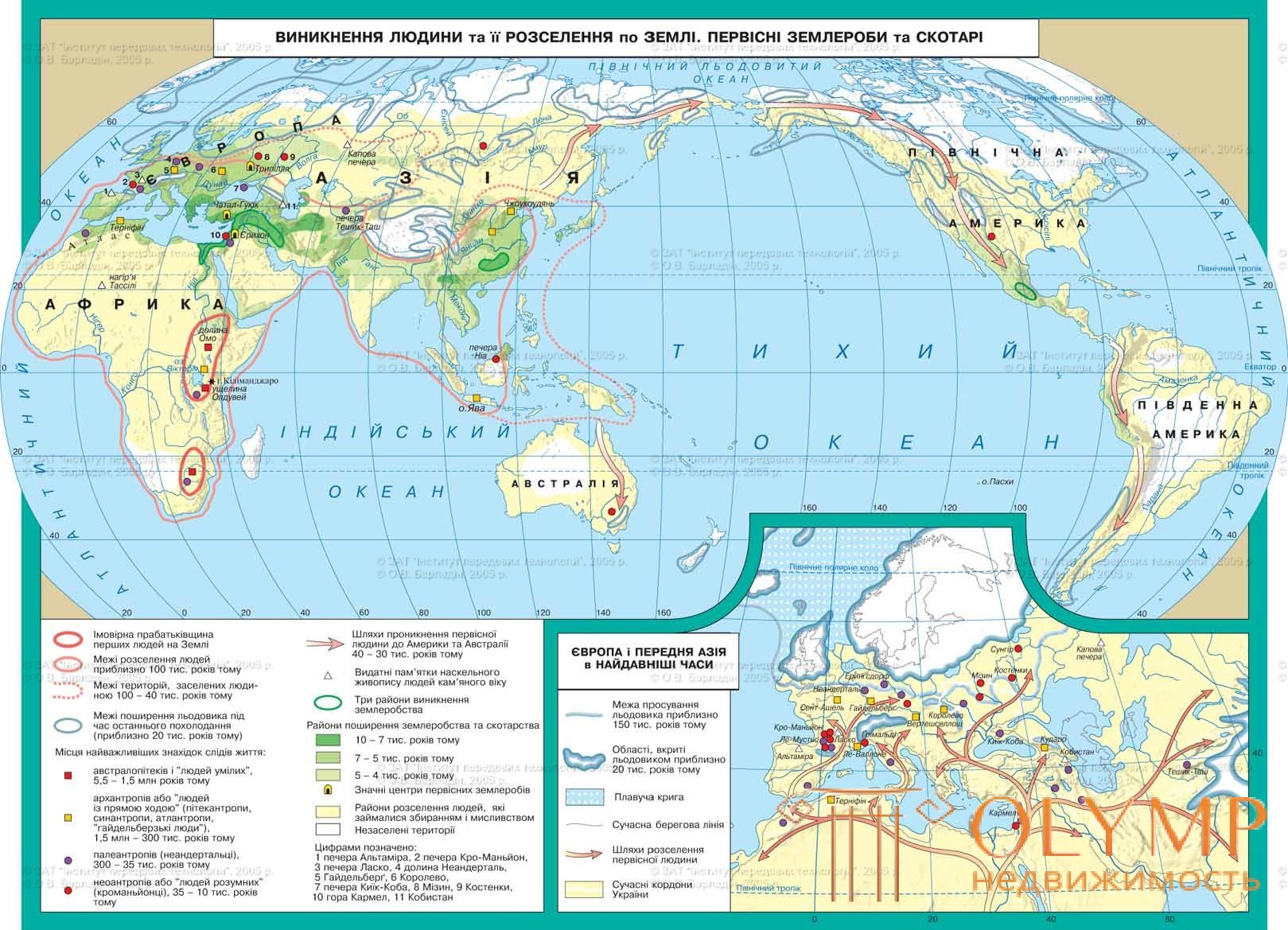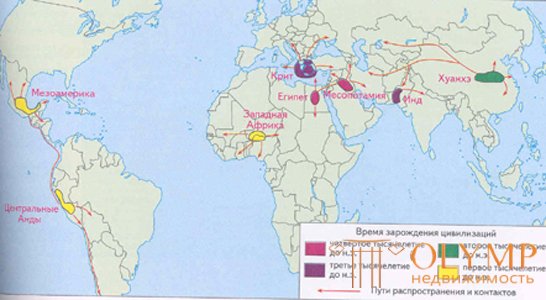
The emergence and spread of urban forms of settlement and urban lifestyles should be viewed in the context of the general historical process of human development. The spread of agriculture led to sedentity, the emergence of permanent settlements, the emergence of the first states (Fig. 1). The first large settlements - cities emerged more than 5 thousand years ago in the relatively densely populated agricultural areas of Mesopotamia and in the valley of the r. Nile, and later - in the valleys of the Indus (Western India) and the Yellow River (North China).

1. 10-7 thousand years ago.
2. 7-5 thousand years ago.
3. 5-4 thousand years ago.
4. Areas of resettlement of people engaged in hunting and gathering.
5. Ways of spreading agriculture and cattle breeding in antiquity.
Fig. 1. The spread of human activities

Human resettlement. Letters indicate Haplogroup Y-DNA.


Fig. 2. The appearance of the first civilizations
Already by the I millennium BC. e. the population of the largest cities of the ancient states in the years of their rise reached 100-250 thousand and more.
Cities had a serious impact on the life of medieval society, contributing to the development of production and transport, the spread of commodity-money relations, and the strengthening of states. K XV century. the largest cities in Europe were Paris (275 thousand inhabitants), Milan and Brugge (125 thousand each), Prague (95 thousand), Novgorod (50 thousand), London (45 thousand), Pskov (35 thousand ), Moscow (30 thousand).
The rapid growth of cities began only in connection with the rapid industrial development of Europe and was its obvious consequence. At the turn of the XVIII and XIX centuries. London became the largest city in the world with a population of 865 thousand, in Paris there were 550 thousand inhabitants, in Moscow in 1812 - 251 thousand, in St. Petersburg - 300 thousand
At the beginning of the XXI century. 6.1 billion people live on Earth, of which more than 3 billion live in cities (Fig. 3). By 2030, the world's population, as experts suggest, will increase by another 2 billion.

Fig. 3. Distribution (density) of the population of the planet in the twentieth century.
The global historical process of the development of mankind is inextricably linked with the process of the emergence, flourishing and decline of cities - the concentration of cultural life and civilization. The term civilization itself in many languages is associated with the concepts of a city, city dweller, citizen, etc.
Что бы оставить комментарий войдите
Комментарии (0)